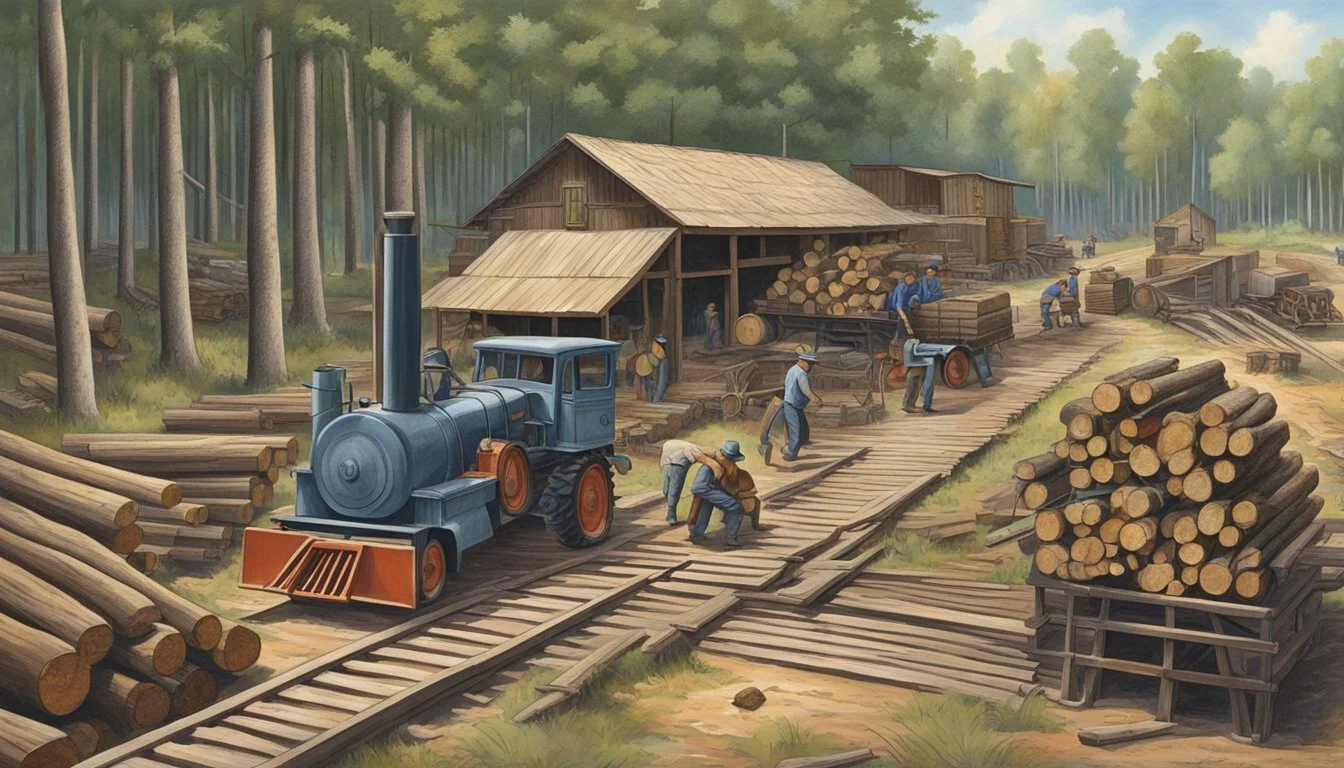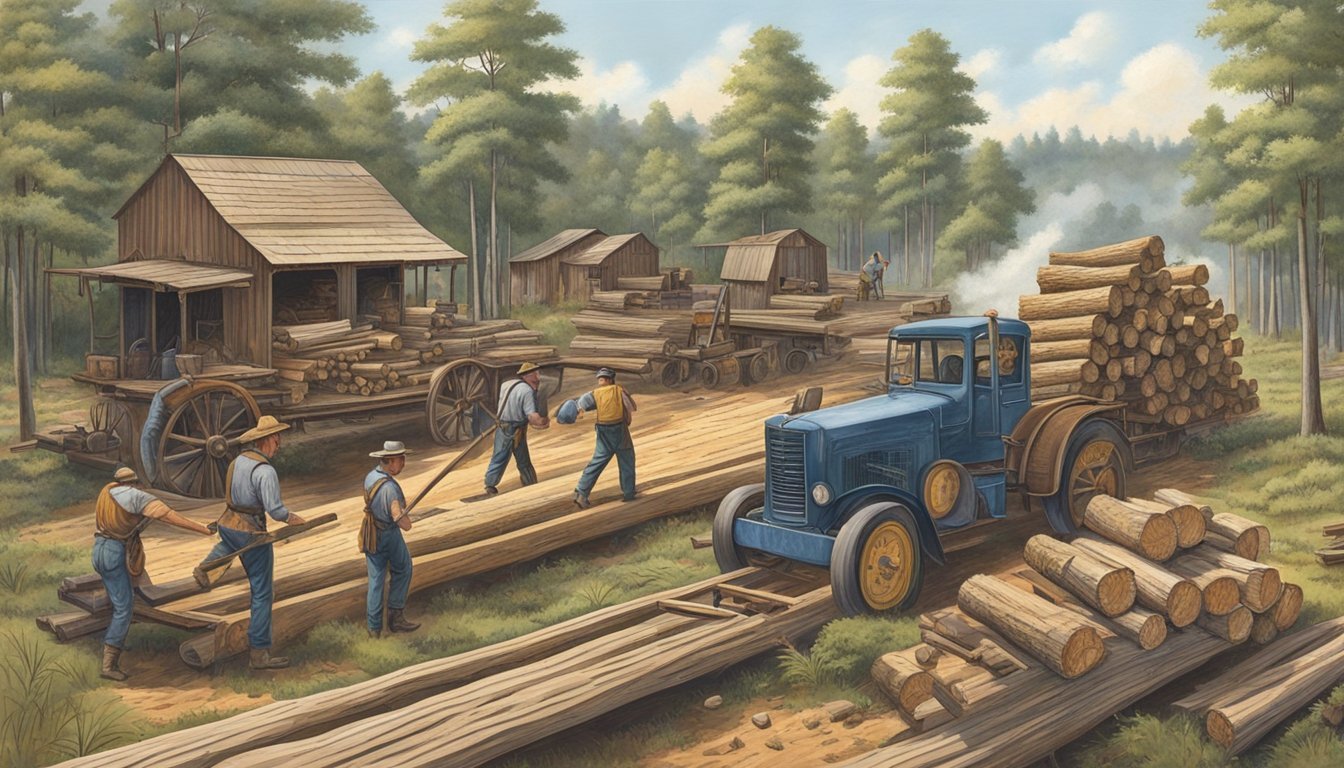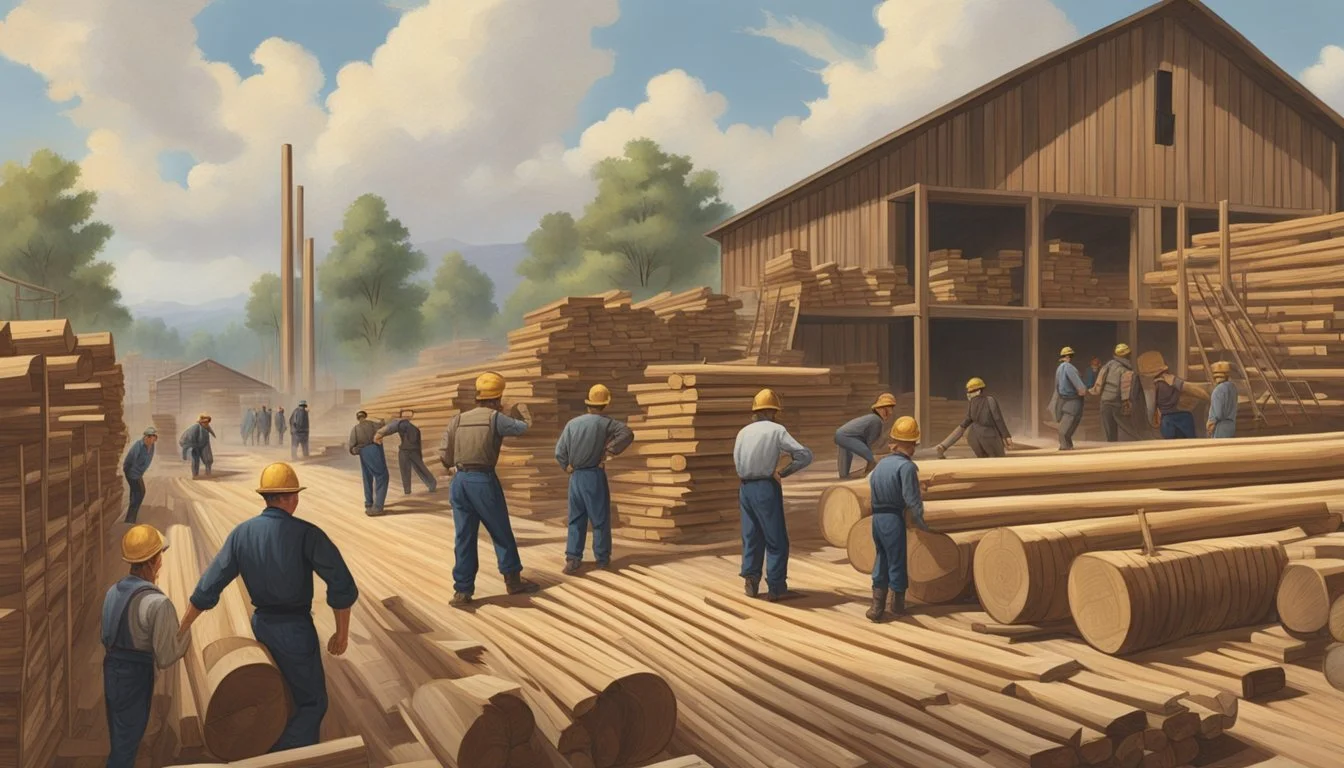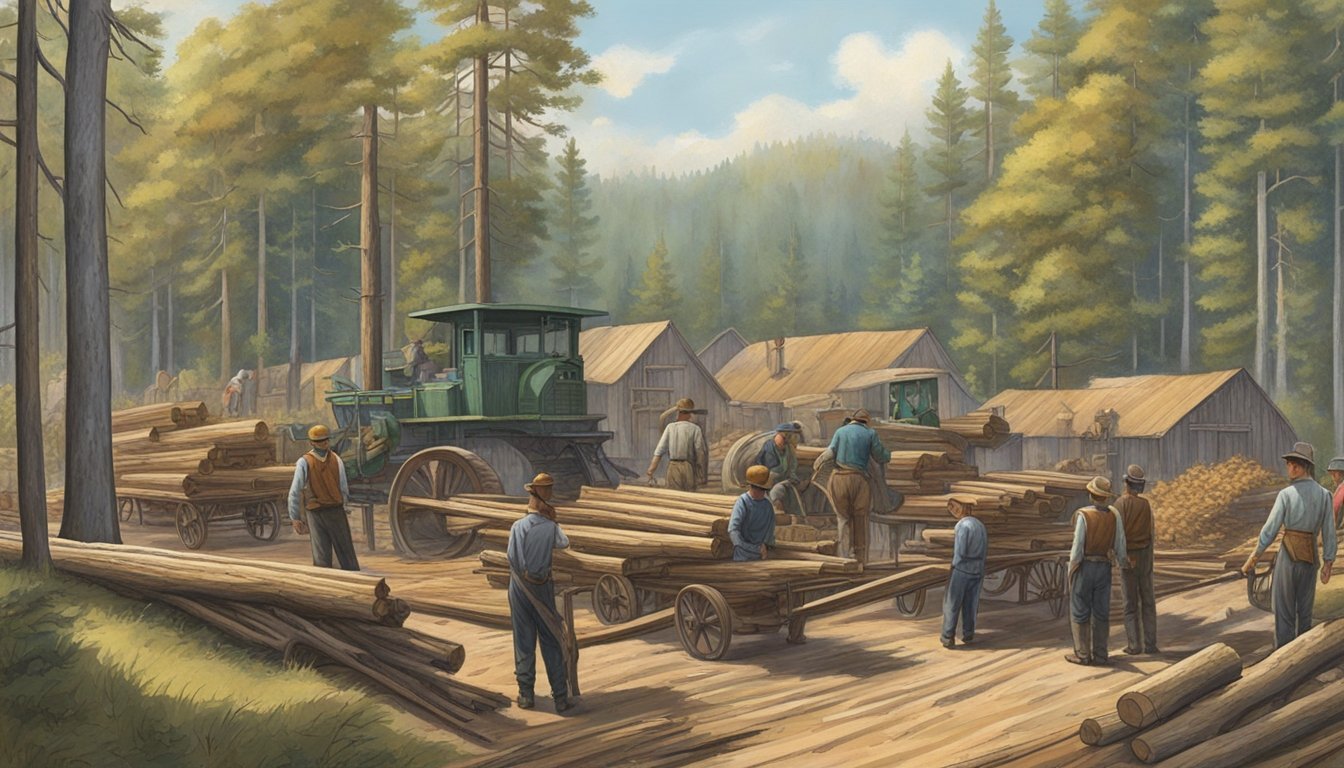The Role of German Texans in Shaping the Texas Lumber Industry
The Texas lumber industry has a rich heritage, with its roots deeply intertwined with the state's diverse cultural tapestry. Among the various ethnic groups that settled in Texas, German Texans have played a significant role in shaping the lumber sector. Their presence in Texas dates back to the mid-19th century, when many German immigrants, drawn by opportunities for land ownership and economic prosperity, contributed to the state's development, including its burgeoning lumber trade.
In the dense pine forests of East Texas, German Texan entrepreneurs emerged as key figures. They utilized their knowledge and industry to capitalize on the region's abundant timber resources. As these settlers acquired land for timber production, often at low prices, they established lumber mills that became pivotal to local economies. By integrating their own cultural practices and wood-working skills, they influenced the growth and methodologies of the Texas lumber industry.
The complexities of America's past, including periods of tension such as World War I, did not spare German Texans, who faced discrimination and significant challenges. Despite these obstacles, their contributions continued to resonate within the lumber industry. The legacy of German Texans' involvement demonstrates not only their resilience but also the diverse foundation of industries that have shaped the state of Texas into what it is today.
German Immigration to Texas
The influx of German immigrants to Texas in the 19th century significantly shaped the state's culture, particularly influencing the lumber industry through their hard work and expertise.
Early Settlements and Origins
German settlers began arriving in Texas around the 1830s, seeking political stability and economic opportunities. Initially, these immigrants were farmers and artisans whose industriousness quickly led to the establishment of German communities. By the 1840s, towns such as New Braunfels and Fredericksburg had been founded by German pioneers. These early settlements became centers for German culture and commerce within the state.
Adelsverein and the Verein Movement
The Adelsverein, officially known as the Society for the Protection of German Immigrants in Texas, was formed in 1842 to support the organized migration of Germans to Texas. They established settlements, including New Braunfels in 1845 and Fredericksburg in 1846, which became pivotal for German Texans. This movement continued until the eve of the Civil War, fostering German immigrant communities in Texas and solidifying their cultural footprint.
German-Texan Identity and Heritage
German-Texans quickly adapted to life in the United States while preserving their heritage, establishing schools and cultural institutions that maintained the German language and traditions. Many Germans in Texas were involved in various industries, with their knowledge contributing significantly to the sector's growth, including the lumber trade. The civil war and subsequent generations saw a melding of German-Texan identity, fortifying a unique cultural legacy within the state.
Economic Contributions of German Texans
German Texans have notably shaped the Texas economy through their involvement in a variety of sectors, particularly in agriculture, manufacturing, and trade. They have also left an indelible mark on the state’s legislative decisions concerning economic affairs.
Agriculture and Livestock Ventures
German settlers in Texas brought with them a wealth of agricultural expertise, which they implemented to effectively cultivate Texan land. They became vital contributors to the agriculture industry, producing a significant volume of crops, and becoming leading farmers and ranchers in the state. German Texans were instrumental in introducing and breeding various livestock, significantly enhancing the livestock industry in Texas.
Crops: Wheat, corn, and other grains
Livestock: Cattle, hogs, and sheep
Trade and Manufacturing Advances
German immigrants propelled the Texas manufacturing sector forward by establishing a plethora of businesses that ranged from small shops to larger factories. They were active in various trades and were involved in the production of goods such as furniture, machinery, and other commodities essential to the state's economic expansion.
Businesses: Textile factories, woodworking shops
Products: Furniture, tools, textiles
Influence on Texas Legislature and Economy
The German-Texan community also wielded influence within the Texas Legislature, advocating for policies that supported the growth of the state's economy. German-language newspapers provided a platform for economic discourse and information, vital for the community's involvement in the state's economic decisions.
Legislation: Economic policies, property rights
Newspapers: Transfer of information, economic debates
The Texas Lumber Industry and German Texans
The integration of German Texans into the Texas lumber industry facilitated the sector's growth, especially with their involvement in sawmills and timber production. Their contribution had a marked influence on the industry's expansion and economic impact in the early days.
Timber Production in East Texas
Timber production in East Texas grew into a prime economic activity by the late 19th century. The dense pine forests offered abundant resources for lumber and related products such as fiber and plywood. German Texans utilized the vast timberlands, contributing to East Texas becoming a hub for timber production.
Sawmills and the Role of German Texans
German immigrants brought skills that proved indispensable to the sawmill business, further expanding the capacity of timber processing and lumber production. They established and operated numerous sawmills in the region. Their expertise in machinery and woodwork contributed to enhancing the efficiency and productivity of sawmills.
Houston: A key player in marketing and distributing lumber.
Galveston: Served as a major port for shipping lumber and other goods.
Expansion and Economic Impact
The collaboration between German Texans and the local workforce propelled the lumber industry forward, positively impacting the Texas economy. The expansion was furthered by the construction of railroads, which improved distribution networks, enabling lumber to be transported efficiently to Houston, Galveston, and beyond.
Value: The lumber industry became one of the leading contributors to the state's economic growth.
Employment: Created numerous jobs for Texans in various sectors related to lumber.
By understanding the roles and influences of German Texans in this industry, one appreciates the historical tapestry that defined the economic landscape of Texas.
Cultural and Social Contributions
German Texans have significantly influenced the cultural and social landscape of Texas, particularly in the realm of education, festivals, and the arts. Their legacy is a tapestry of traditions and institutions that continue to enrich the state’s diverse cultural heritage.
German Language and Education
German settlers placed a high value on education and established numerous schools in Texas. Many of these institutions taught in German, supporting the preservation of their language and cultural identity. They contributed to Texas by founding German-English schools, ensuring their mother tongue and cultural values were passed down to subsequent generations.
Festivals and Traditions
The social life of German Texans is epitomized by their vibrant festivals. Wurstfest, held annually in New Braunfels, is a prime example of this community's dedication to celebrating their heritage. The festival showcases German food, beer, and traditional activities, drawing on the longstanding customs that German immigrants brought with them. Additionally, the observance of German Culture Month reflects their commitment to honor and share their cultural legacy.
Music and Art Influence
German Texans have left an indelible mark on the state's music and art scenes. Music, particularly polka and waltz, became a part of the cultural identity, with dances and performances becoming community fixtures. German bands and choral societies formed, extending their influence. In art, newspapers like the Texas Staats-Zeitung, established by Dr. Adolf Douai, played a pivotal role, promoting German literature and ideas, as well as functioning as a community bulletin for the arts. The legacy of such contributions from the German-Texan community persists in the state's rich cultural fabric.
Challenges and Tensions
German Texans in the lumber industry faced significant societal challenges, particularly during World War I, when anti-German sentiment was rampant. The dual pressures of cultural assimilation and the struggle to preserve their heritage added to the complex dynamics of their role in the Texas economy.
World War I and Anti-German Sentiment
During World War I, German Americans, including those in Texas, were subjected to intense scrutiny and suspicion. Their loyalty to the United States was often questioned, causing increased tension within communities. Germans were pressured to buy Liberty Bonds as a demonstration of their American patriotism. The climate of suspicion escalated to violence, with reports of beatings and even murder of Germans who expressed criticism of the war.
The federal government enacted measures that further inflamed tensions. Notably, the Texas Legislature passed House Bill 304 in 1919, which banned the teaching of the German language in public schools. This bill exemplified the wartime climate of fear and distrust towards German Americans and showcased the government's role in enhancing these divisions.
Cultural Assilimation and Preservation
German Texans had to navigate the precarious balance between assimilating into American culture and preserving their own German heritage. This was particularly relevant in the lumber industry, where Germans often worked together and formed tight-knit communities. Despite their contributions to the Texan economy, German Texans often found their customs and language under scrutiny. They gradually adopted aspects of American culture to lessen the tensions they faced, yet many still endeavored to preserve elements of their German identity, including traditional celebrations and familial practices. This simultaneous push for assimilation and cultural preservation highlighted the complex identity of German Texans as they strove to be both American and retain their German roots.
Legacy of German Texans in Texas
The contributions of German Texans have significantly shaped the state’s industry, heritage, and culture, particularly through their involvement in the lumber industry and the preservation of their unique cultural identity.
Notable Personalities and Leaders
German Texans have been pivotal in the development of Texas, with many leaders making their mark on the state's history and economy. A notable figure is Hermann Lungkwitz, a German-born Texan who became known for his paintings of the Texas landscapes, reflecting the deep respect and connection German Texans had with their new homeland. Leaders like Prince Carl of Solms-Braunfels were instrumental in establishing settlements such as New Braunfels, a town that would play a key role in the state’s development.
Preservation of Historical Sites and Artifacts
Efforts to preserve historical sites are evident with towns like Fredericksburg and New Braunfels maintaining their German heritage through architecture, museums, and annual celebrations such as German Culture Month. For instance, the Sophienburg Museum in New Braunfels houses a vast collection of artifacts from the German migration to Texas, offering insights into the lives of early settlers and their influence on the lumber industry and other sectors.
Influence on Modern Texas
The impact of the German Texan heritage continues to be felt in modern Texas. Their work ethic and skills significantly advanced the lumber industry in Texas. German Texans' cultural legacy is also present in the educational sphere, with Texas colleges and universities offering German studies programs that delve into the language and cultural practices of the settlers. Their influence extends to Texas' culinary scene, with German dishes and beer being a staple in many Texas communities.






